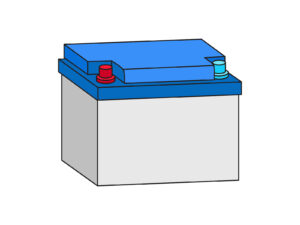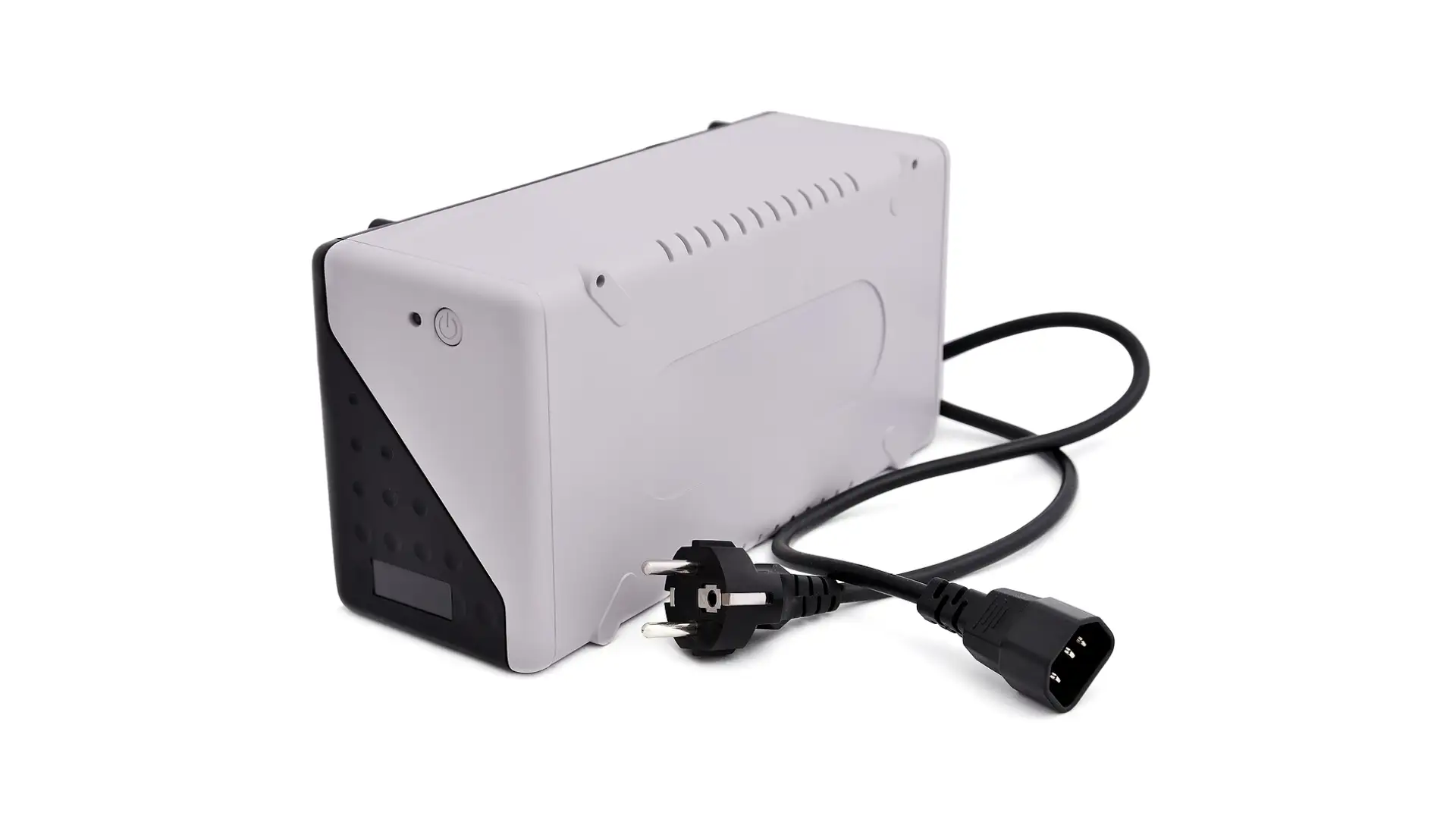
Elevator Battery Backup
Elevators have always been a vital part of my everyday experience, especially when navigating tall buildings and multi-story structures. They offer not just convenience but also accessibility, making moving around these spaces much more efficient. However, I've noticed that during power outages, elevator operations can be significantly disrupted. This not only leaves people stranded but also creates potential safety risks. That's why I find elevator battery backup systems so essential.
In my journey to understand these systems better, I've learned about their importance, how they work, the different types available, and the processes involved in their installation and maintenance. Most importantly, I've come to appreciate their critical role in ensuring safety and reliability in vertical transportation.
The Significance of Elevator Battery Backup Systems
Ensuring Passenger Safety
In the realm of elevator operation, ensuring the safety of passengers is of paramount importance. In situations involving power outages or emergency evacuations, the need for a swift exit from a building becomes critical.
Elevator battery backup systems play a vital role in this regard by guaranteeing that elevators can be safely brought down to the nearest floor, facilitating the prompt and secure evacuation of passengers. This functionality is particularly crucial for individuals with mobility impairments who rely on elevators for their vertical mobility needs.
These backup systems provide peace of mind by offering a reliable means of egress during challenging circumstances.
Preventing Trapped Passengers
Consider the distressing scenario of being trapped inside an elevator for an extended duration during a power failure. Elevator battery backup systems are designed to prevent such harrowing incidents.
By serving as a dependable power source, they enable elevators to be lowered to a designated safe landing, thereby minimizing the likelihood of passengers becoming stranded between floors.
This not only ensures physical safety but also helps alleviate the anxiety and discomfort associated with being trapped in confined spaces.
Maintaining Building Functionality
Understanding Elevator Battery Backup Systems
Elevator battery backup systems are essential for ensuring the continuous operation of elevators during power outages. These systems come in two primary types, each with distinct components and operating principles.
Uninterruptible Power Supply (UPS) Systems:
UPS systems are widely utilized in elevator technology due to their ability to provide immediate power backup during blackouts. The key components and functions of a UPS system include:
- Rectifier/Charger: This component plays a crucial role in the UPS system. It serves to convert alternating current (AC) from the main power supply into direct current (DC). This DC power is then used to continuously charge the batteries, ensuring they are always ready to provide backup power.
- Battery Bank: The battery bank is the heart of the UPS system. It consists of multiple batteries connected together to store a significant amount of electrical energy in the form of DC power. This stored power is what keeps the elevator operational during a power failure.
- Inverter: The inverter in a UPS system is responsible for converting the DC power stored in the battery bank back into AC power. This conversion is crucial because the elevator's motor and control systems typically operate on AC power. The inverter ensures a seamless transition from main power to battery power, avoiding any interruption in the elevator's operation.
Automatic Transfer Switch (ATS) Systems:
Although less common than UPS systems, ATS systems play a similar role in providing power backup for elevators. Their operation involves:
- Transfer Switch: The core component of an ATS system is the automatic transfer switch. This switch is designed to detect a power failure in the main grid automatically. Upon detection, it quickly shifts the power source from the main grid to a backup generator or batteries.
- Backup Power Source: The ATS system may be connected to backup generators or a set of batteries. When the transfer switch activates due to a power outage, it reroutes the power supply to these backup sources, thereby ensuring the elevator continues to operate without relying on the main power grid.

Installation and Maintenance
Professional Installation by Experts
Elevator battery backup systems necessitate expert installation by certified professionals who specialize in elevator mechanics and electrical systems. These professionals should possess extensive knowledge and experience in both domains. The correct installation of these systems is not just a matter of compliance but is fundamental to their reliable operation.
A proper installation guarantees that the system will function as expected in emergency situations, ensuring the safety and uninterrupted operation of the elevator.
Routine Testing for Optimal Functionality
The effectiveness of elevator battery backup systems hinges on consistent and thorough testing. This routine testing should include planned simulations of power outage scenarios to assess the system's response. It's not just about verifying if the system works, but ensuring that it works exactly as required in real-world scenarios.
Moreover, regular maintenance checks are paramount. These checks should comprehensively inspect all critical components, including the batteries, cables, and control units. This regular scrutiny helps in early identification and rectification of potential issues, thereby preventing system failures.
Timely Battery Replacement for Continued Reliability
The heart of the elevator battery backup system lies in its batteries, which have a finite lifespan influenced by factors such as usage frequency and maintenance practices. Regular monitoring of battery health is crucial. It is vital to replace batteries proactively, rather than reactively, to uphold the system's reliability.
Delayed replacement can lead to compromised system performance or even failure in emergency situations. Therefore, a schedule for battery inspection and replacement should be an integral part of the system's maintenance plan. This proactive approach ensures the elevator remains operational and safe, even during unexpected power disruptions.
Types of Elevator Battery Backup Systems
Standby Battery Backup Systems
Standby battery backup systems are specifically engineered to support crucial elevator functions in the event of a power outage. These systems are not designed to move the elevator car but rather to ensure the safety and comfort of passengers during an outage. Key features include:
- Emergency Lighting: Ensures visibility in the elevator car, reducing panic and disorientation among passengers.
- Ventilation Support: Maintains air circulation within the car, preventing discomfort or health hazards due to lack of ventilation.
- Emergency Communication Systems: Keeps the communication channels like intercoms operational, enabling passengers to communicate with building security or emergency services.
These systems activate automatically during power failures, providing immediate support to these essential functions and ensuring passengers are not left in complete darkness or isolation.
Full Battery Backup Systems
Full battery backup systems offer a more comprehensive solution compared to standby systems. In addition to supporting basic functions, these systems are capable of:
- Operating the Elevator Car: Enables the elevator to move to the nearest floor during a power outage, ensuring passengers can safely exit the elevator.
- Powering All Essential Functions: Like standby systems, they also support lighting, ventilation, and communication systems.
- Ensuring Passenger Convenience and Safety: By moving the elevator to the nearest floor, these systems prevent scenarios where passengers are trapped inside the car for prolonged periods.
Legal Requirements and Regulations
Elevator battery backup systems are subject to various regulations and codes to ensure safety and reliability. Some of the key regulations include:
ASME A17.1/CSA B44 Safety Code for Elevators and Escalators
The American Society of Mechanical Engineers (ASME) A17.1, in conjunction with the Canadian Standards Association (CSA) B44, provides a comprehensive set of guidelines and requirements for elevator safety. Key aspects of these codes as they pertain to elevator battery backup systems include:
- Installation and Operation Standards: These standards outline the technical specifications for installing and operating elevator battery backup systems. They ensure that the systems are integrated correctly and function as intended during emergencies.
- Safety Measures: The code emphasizes safety features that must be incorporated into the battery backup systems, ensuring that they provide a reliable source of power in emergencies, thereby reducing the risk of accidents or entrapment.
- Regular Inspection and Maintenance: Mandates regular inspections and maintenance of these systems to ensure ongoing compliance and functionality.
Local Building Codes
Local building codes play a crucial role in determining the requirements for elevator battery backup systems. These codes vary based on geographic location and can be more stringent than national standards. Factors that local codes might consider include:
- Building's Use and Size: Different types of buildings (e.g., residential, commercial, healthcare facilities) may have varied requirements based on their size and the nature of their occupancy.
- Occupancy Levels: Buildings with high occupancy levels may have more stringent requirements to ensure the safety of a larger number of people.
Accessibility Standards
Accessibility standards, such as those outlined in the Americans with Disabilities Act (ADA) in the U.S., include provisions for elevators in public buildings. These standards often encompass:
- Backup Power Requirements: To ensure that elevators remain operational during power outages, particularly for individuals with disabilities.
- Emergency Operation and Signaling Devices: Standards may specify requirements for emergency communication and control devices to be functional during power outages, ensuring that help can be reached and that elevators can be operated by those with accessibility needs.
FAQ: Elevator Battery Backups and Power Outages
Q: Do elevators have battery backups?
A: Yes, many modern elevators are equipped with battery backup systems. These systems are designed to ensure that the elevator can safely reach the nearest floor and open its doors in the event of a power outage, allowing passengers to exit.
Q: What happens if the power goes out while you are in an elevator?
A: If the power goes out while you are in an elevator, the battery backup system should activate. This system will typically provide enough power for the elevator to move to the nearest floor and open its doors. If the backup system fails, or if the elevator does not have one, you should use the emergency communication systems inside the elevator to seek assistance.
Q: What are the backup power requirements for elevators?
A: The backup power requirements for elevators vary depending on the building codes and regulations in different regions. Generally, elevators are required to have a backup power system capable of operating the elevator for a certain period, ensuring safe evacuation of passengers. This includes powering the control system, lighting, and communication devices inside the elevator.
Q: What should you do if you are stuck in an elevator during a power outage?
A: If you find yourself stuck in an elevator during a power outage, it's important to remain calm. Use the emergency button or telephone inside the elevator to alert building maintenance or emergency services. Avoid attempting to open the doors or exit the elevator yourself, as this can be dangerous. Wait for professional assistance.
Conclusion
In conclusion, my deep dive into the world of elevator battery backup systems has been an enlightening journey. I've come to realize the immense significance of these systems in ensuring not only the functionality but also the safety of elevators during power outages. From ensuring passenger safety and preventing the distress of being trapped, to maintaining the essential operations of buildings, these systems are more than just a technical addition; they are a lifeline in times of emergency.
Understanding the nuances of different types of battery backup systems, from UPS to ATS, and the importance of their installation and maintenance, has given me a new perspective on what goes into keeping elevators running smoothly and safely. It's fascinating to see how technology and foresight can collaborate to create solutions that significantly impact our daily lives and safety.
Moreover, learning about the legal requirements and standards that govern these systems, like the ASME A17.1/CSA B44 code and local building codes, has highlighted the complexity and importance of compliance and safety standards in the elevator industry.
This exploration has not only broadened my knowledge but also deepened my appreciation for the unseen yet crucial elements that ensure our vertical travels are safe and uninterrupted. Elevator battery backup systems, often unnoticed until needed, stand as unsung heroes in our modern, vertically-integrated world.
Sources
continue reading
Related Posts
Uninterrupted Power Supply For Computer In today’s fast-paced and digitally […]
Uninterruptible Power Supply For TV In the digital age, our […]
Uninterruptable Power Supply Company In my daily life, both personally […]




